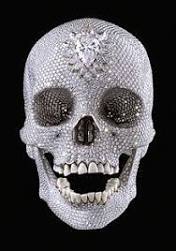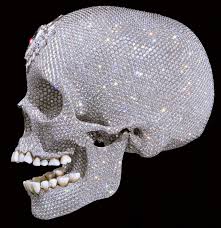This was Florence, whose galleries lured millions of travelers to admire Botticelli’s Birth of Venus, Leonardo’s Annunciation, and the city’s pride and joy—Il Davide
Michelangelo Prigioni
Botticelli's illustration of Hell -...Botticelli was extremely faithful in his interpretation of Dante’s text. In fact, he spent so much time reading Dante that the great art historian Giorgio Vasari said Botticelli’s obsession with Dante led to ‘serious disorders in his living
The Three Shades from The Gates of Hell
Stradanu's Phlegyas
William Blake sinners in tempest
Bouguereau’s strangely erotic vision of Dante and Virgil
Bayros’s tortured souls huddling beneath a hail-like torrent of scalding pellets and droplets of fire
More in this blog post
More in this blog post
Salvador Dalí’s eccentric series of watercolors and woodcuts
Doré’s huge collection of black-and-white etchings More in this blog post
Viale Niccolò Machiavelli has been called the most graceful of all Florentine avenues. With wide S-curves that serpentine through lushly wooded landscapes of hedges and deciduous trees...
Ne’er walked the earth a greater man than he.
—Michelangelo
Michelangelo’s Last Judgment
Langdon advanced slides to a frightening detail of a muscle-bound beast swinging a giant paddle at cowering people. “This is Dante’s hellish ferryman, Charon, beating straggling passengers with an oar.”
Langdon moved now to a new slide—a second detail of Michelangelo’s Last Judgment—a man being crucified. “This is Haman the Agagite, who, according to Scripture, was hanged to death. However, in Dante’s poem, he was crucified instead. As you can see here in the Sistine Chapel, Michelangelo chose Dante’s version over that of the Bible.” Langdon grinned and lowered his voice to a whisper.
Porta Romana, built in 1326
The Malebolge
The Boboli Gardens.
The Boboli Gardens had enjoyed the exceptional design talents of Niccolò Tribolo, Giorgio Vasari, and Bernardo Buontalenti
La Cerchiata’s leafy tunne
Stoldo Lorenzi’s bronze of Neptune clutching his three-pronged trident. Irreverently known by locals as “The Fountain of the Fork,”
Palazzo Pitti
Pitti Palace
Piazza dei Pitti
Braccio di Bartolo
Crest of the Medici
The Buontalenti Grotto
Vasari Corridor.
l Corridoio Vasariano—the Vasari Corridor—was designed by Giorgio Vasari in 1564 under orders of the Medici ruler, Grand Duke Cosimo I, to provide safe passage from his residence at the Pitti Palace to his administrative offices, across the Arno River in the Palazzo Vecchio.
Ponte Vecchio
o
Originally, the bridge had been home to Florence’s vast, open-air meat market, but the butchers were banished in 1593 after the rancid odor of spoiled meat had wafted up into the Vasari Corridor and assaulted the delicate nostrils of the grand duke.
In 1216, a young nobleman named Buondelmonte had rejected his family’s arranged marriage for the sake of his true love, and for that decision he was brutally killed on this very bridge.
His death, long considered “Florence’s bloodiest murder,” was so named because it had triggered a rift between two powerful political factions—the Guelphs and Ghibellines—who had then waged war ruthlessly for centuries against each other. Because the ensuing political feud had brought about Dante’s exile from Florence, the poet had bitterly immortalized the event in his Divine Comedy: O Buondelmonte, through another’s counsel, you fled your wedding pledge, and brought such evil!
Palazzo Vecchio
Uffizi Gallery
Hall of the Five Hundred
The Palazzo Vecchio, much like the United States Capitol Building, was both a tourist attraction and a governmental office.
Michelangelo’s breathtaking Genius of Victory

Vasari’s Battle of Marciano.

Cerca Trova

A tiny windowless chamber designed by Vasari as a secret study for Francesco I

The Fall of Icarus

An Allegory of Human Life



Dante's death mask

Plague mask

Hercules and Diomedes.

Hall of geographical maps vecchio

Vasari’s Apotheosis

Duke of Athens Stairway

The Piazza del Duomo formerly Cathedral of Santa Maria del Fiore
A tiny windowless chamber designed by Vasari as a secret study for Francesco I
The Fall of Icarus
An Allegory of Human Life
For the Love of God—a controversial piece by Damien Hirst, which had caused an uproar when it was shown inside Vasari’s famed Studiolo.
A life-size cast of a human skull in solid platinum, its surface had been entirely covered with more than eight thousand glittering, pavé-set diamonds. The effect was striking. The skull’s empty eye sockets glistened with light and life, creating a troubling juxtaposition of opposing symbols—life and death
Dante's death mask
Plague mask
Hercules and Diomedes.
Hall of geographical maps vecchio
Vasari’s Apotheosis
Duke of Athens Stairway
The Piazza del Duomo formerly Cathedral of Santa Maria del Fiore
Vasari's Last Judgement
The Baptistry of San Giovanni.
The Baptistry of San Giovanni.
Adorned in the same polychromatic facing stones and striped pilasters as the cathedral, the baptistry distinguished itself from the larger building by its striking shape—a perfect octagon. Resembling a layer cake, some had claimed, the eight-sided structure consisted of three distinct tiers that ascended to a shallow white roof.
Langdon knew the octagonal shape had nothing to do with aesthetics and everything to do with symbolism. In Christianity, the number eight represented rebirth and re-creation. The octagon served as a visual reminder of the six days of God’s creation of heaven and earth, the one day of Sabbath, and the eighth day, upon which Christians were “reborn” or “re-created” through baptism. Octagons had become a common shape for baptistries around the world.
Book Mentions
Lives of the Most Excellent Painters, Sculptors, and Architects - Giorgio Vasari
Brunelleschi’s Dome - Ross King
excellent, very useful for my forthcoming visit to florence
ReplyDelete